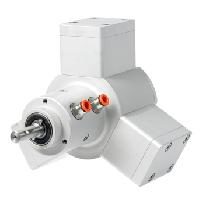Redesigned Air Motors Minimize Need for Compressors

Via an integral rotary valve, air up to 100 psi is supplied to each of the three pistons in turn. The free-floating pistons transmit torque on start-up that can be adjusted via a pressure regulator, resulting in high torque at variable low speed and low noise.
Because the Dynatork air motor traps the compressed air within the piston/cylinder, allowing for maximum energy conversion, the unit is easier to seal than a vane motor cylinder. The air motor consumes up to 80 percent less air than a vane motor, providing a significant cost savings even at maximum torque. It can be used in harsh and hazardous environments thanks to redesigned internal air passages that replace the external tube structure, and it can operate in constant start-stop applications under loads displaying similar characteristics to a stepper motor.
"The original purchasing criteria for the motors, given by the UK automaker, were greater reliability on 24/7 operation and freedom from lubrication to avoid the possibility of contamination," said David Lockett, joint managing director of Huco Dynatork. "However, by changing to the air motor, this manufacturer has gained considerably more. The company has now installed 42 Dynatork motors which have provided a capital saving of two 600 scfm compressors and an overall power saving of 152 kVA per year."
Available in aluminum, stainless steel for harsh environments and plastic for high-pressure washdown environments, the air motors can be supplied as fully submersible units for lubricated or non-lubricated operation.
The air motors are available with maximum torques up to 16 Nm or 550 Nm with gearbox. Huco has also introduced a new controller that holds the motor speed constant under variable load for paint and other liquid stirring applications where torque reduces as the paint or liquid levels fall.





